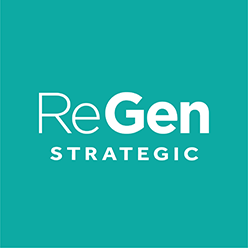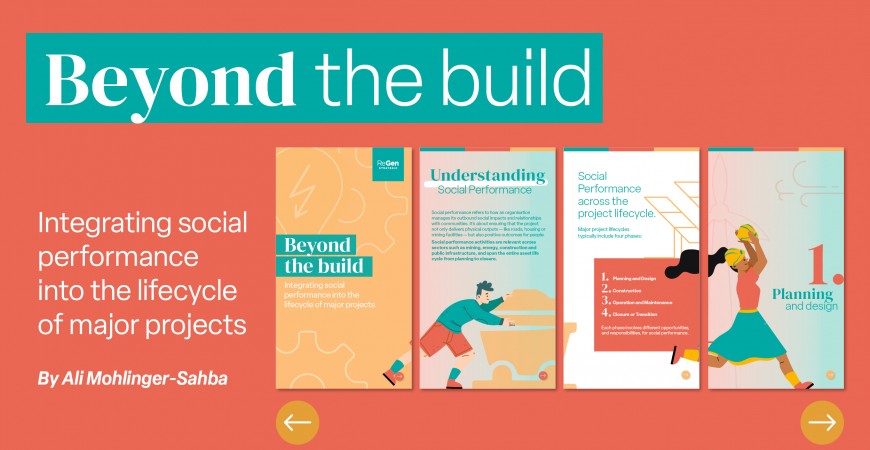Understanding social performance
Social performance refers to how an organisation manages its outbound social impacts and relationships with communities. It’s about ensuring that the project not only delivers physical outputs — like roads, housing or mining facilities — but also positive outcomes for people.
Social performance activities are relevant across sectors such as mining, energy, construction and public infrastructure, and span the entire asset life cycle from planning to closure.
Social Performance across the project lifecycle
Major project lifecycles typically include four phases:
- Planning and Design
- Construction
- Operation and Maintenance
- Closure or Transition
Each phase involves different opportunities, and responsibilities, for social performance.
-
Planning and Design
At this stage, social performance is proactive and predictive.
Key Activities:
- Social Impact Assessment (SIA): Identifies potential social impacts, both tangible (e.g. traffic, housing demand) and intangible (e.g. sense of place, cultural heritage).
- Stakeholder Mapping and Early Engagement: Ensures all affected groups, including vulnerable populations, are included from the start.
- Baseline Studies: Provide a benchmark for measuring future impacts and changes.
Example: An energy company planning a wind farm in South-West Western Australia conducts a Social Impact Assessment and identifies strong community concern around the visual impact of turbines on a nearby lookout popular with locals and tourists. This feedback informs a redesign that adjusts turbine placement to preserve key view corridors and improve community acceptance.
-
Construction
During construction, impacts become real and visible.
Key Activities:
- Social Risk Management: Implement a Social Impact Management Plan that sets out mitigations for predicted impacts. Identify, mitigate and monitor predicted and realised impacts as well as emerging issues (e.g. local employment tensions, dust, noise).
- Grievance Mechanisms: Channels for community members to raise concerns and receive timely responses and redress.
- Ongoing Community Engagement: Go beyond newsletters and one-way updates. Host regular community drop-in sessions, co-design working groups, and site visits that allow residents to ask questions, voice concerns, and influence decisions—such as construction timing, traffic routes, or workforce housing plans. Engagement should be continuous, respectful, and adapted to community needs.
Example: A mining project in the Pilbara region of Western Australia initially focuses on providing updates through fact sheets and briefings but shifts toward more meaningful engagement after feedback from local Aboriginal communities. The company establishes a joint cultural advisory group that meets monthly to review impacts and discuss mitigation options. This results in changes to haulage routes, joint development of heritage management protocols, and the creation of a community liaison role filled by a Traditional Owner. The process builds trust and enables shared decision-making on high-impact construction activities.
-
Operation and Maintenance
A commitment to sustaining and managing social relationships and impacts over the long term.
Key Activities:
- Sharing Benefits with Local Communities: Social investment initiatives improve relationships by enhancing equitable sharing of project benefits. Invest in initiatives that reflect local aspirations and priorities. These initiatives might include supporting community health programs, improving local amenities, funding youth services, or enhancing access to education and training. Wherever possible, work in partnership with trusted local community organisations to ensure initiatives are culturally appropriate, locally led, and responsive to genuine needs.
- Monitoring and Evaluation: Regularly assess the effectiveness of Social Impact Management Plans and Social Investment Plans and continue to monitor how operations affect local wellbeing, economy, and services. Ensure community feedback is included in evaluation data.
- Adaptive Management: Modify operations based on monitoring and evaluation results.
Example: A public transport authority in Melbourne adjusts station design and staffing based on ongoing feedback from people with disabilities, improving accessibility and user experience.
-
Closure or Transition
Closure and decommissioning or ownership transitions (can cause disruption if not managed well.
Key Activities:
- Exit Planning with Communities: Engage early to discuss timelines, impacts, and legacy planning.
- Cultural and Environmental Closure Commitments: Ensure land rehabilitation and cultural heritage preservation.
- Documentation and Knowledge Transfer: Help communities prepare for post-asset scenarios.
Example: A coal mine in central Queensland begins planning for closure ten years in advance of its expected end of life. The company partners with local councils, Traditional Owners, and community organisations to explore options for land rehabilitation and post-mining land use, including grazing and renewable energy development. Closure planning includes support for workforce transition, cultural heritage protection, and the handover of community infrastructure developed during the mine’s operation.
Common Themes
Consider these for every project:
Social Risk Management
Anticipate, mitigate, monitor and respond to outbound risks (potential negative impacts) that could affect people - e.g. displacement, traffic safety, landscape aesthetics, cultural tensions.
Meaningful Engagement
Go beyond information-sharing. Engagement must be inclusive, respectful, and two-way, and adapted over time as relationships deepen.
Grievance Processes
Grievance mechanisms should be accessible, trusted, and responsive—and aligned with international standards like IFC Performance Standard 2.
Tangible and Intangible Impacts
Infrastructure projects affect not just jobs and services, but identity, heritage, and community well-being. All deserve attention and mitigation.
Monitoring, Evaluation, and Learning (MEL)
Embed MEL systems to track completion of social impact management plans and activities, assess effectiveness, and adapt. Use mixed methods (quantitative and qualitative), and involve stakeholders in interpretation and improvement.
Key Takeaways
- Social performance is essential for successful, sustainable infrastructure.
- Effective activities change with each project phase—but always prioritise people.
- Strong social performance builds trust, reduces conflict, and enhances legacy.
- Evaluation and learning help projects adapt, improve, and deliver long-term benefit.
Further Reading
- Dyer, A. (2024). Community Engagement Review Report. Australian Energy Infrastructure Commissioner, 2023, on behalf of the Department of Climate Change, Energy, the Environmental and Water: Canberra.
- International Finance Corporation (IFC) (2012). Performance Standards on Environmental and Social Sustainability: Performance Standards 1 and 7.
- Kemp, D. & Owner, J.R. (2019). Establishing the foundations for effective social performance in the global mining industry. Centre for Social Responsibility in Mining, Sustainable Minerals Institute, The University of Queensland: Brisbane.
- Vanclay, F., Esteves, A.M., Aucamp, I., Franks, D.M. (2015) Social Impact Assessment: Guidance for Assessing and managing the social impacts of projects. International Association for Impact Assessment (IAIA)
Contact the author:
Ali Mollinger-Sahba ali@regenstrategic.com.au
regenstrategic.com.au
 ReGen Strategic
ReGen Strategic